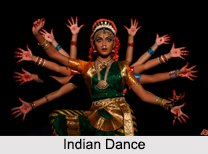 Performing arts of India have had a long and rich development of growth and development. Performing arts has a well-placed significance in the civilization and tradition of Indian society. Indian performing arts are well praised by people from across the globe. Love, humour, suffering, anger, bravery, fear, repulsion, wonder and peacefulness are the nine basic emotions, which are basic to all Indian aesthetics. Based on these nine fundamental emotions, the Indian performing arts exist.
Performing arts of India have had a long and rich development of growth and development. Performing arts has a well-placed significance in the civilization and tradition of Indian society. Indian performing arts are well praised by people from across the globe. Love, humour, suffering, anger, bravery, fear, repulsion, wonder and peacefulness are the nine basic emotions, which are basic to all Indian aesthetics. Based on these nine fundamental emotions, the Indian performing arts exist.
History of Performing Arts of India
The traditional forms of Art developed for the magnificence of temple and palace, reaching their peak about India around 2nd C.E. forwards and under the dominant Gupta Empire. Through the ages, competitor kings and nawabs competed with each other to attract the most famous artists and performers to their courts. The Natya Shastra, written through the 2nd century has laid the formation of music, dance and drama. The traditional music custom in India has constantly been a form of meditation, awareness and worship. The musical sounds of music can suggest the deepest emotions and moods of the audience, expert and non-connoisseurs equally.
Types of Performing Arts of India
The four major performing arts of India are dance, music, theatre and film. Following are the types of Performing Arts of India:
Dance: Indian Dance dates back to the earliest Indus Valley Civilization. It is traced on carved stones which the earliest Indian civilization gave importance to diverse forms of Dance. Dance when combined with song and storytelling, dance metamorphosed into theatre. The different dance form of India offers scintillating experiences to the viewers. Along with the major dance forms like Bharatnatyam, Mohiniyattam, Koodiyattam, Kathakali, Kuchipudi, and Odissi, some other local and tribal versions of dances are also practiced in India. Kathakali gained much eminence from the universal community. Chakyar Kootthu, a dance practiced in Northern Kerala is accepted by the United Nations. The Kathak style started in northern India and stressed on musical footwork. Manipuri of Manipur uses elegant turning and winning in its dances. The Natya Shastra, the initial Indian text on the subject, speaks of ekaharya (solo dance) and the anekaharya (dance as performed by more than one person) which was written between 200 BC - AD 200 by Bharatamuni.
 Drama: It may be staged on any kind of stage: proscenium stage or open stage. Traditional `Jatra` in Odisha, for example, was staged on a theatre-in-the round around which the audience sit and view the play. Its difference from dance is that the drama has a plot, i.e. a series of events based on meaningful narratives leading to a structural unity. Each part of the plot is related to the other parts in such a way that if any one part is dropped, displaced or removed the whole plot may mean something else or may become meaningless. The plot can be divided into episodes, which can again be divided into actions. There are dramatic characters to play various roles in the play as required by the plot. Actors play out these roles of the characters. The dialogue or the monologue or even the soliloquies are meant for an audience. A drama must have a well-knit plot with some characters and actions. Giti Natya or Dance drama has dramatic plot but the whole theme is narrated through dance.
Drama: It may be staged on any kind of stage: proscenium stage or open stage. Traditional `Jatra` in Odisha, for example, was staged on a theatre-in-the round around which the audience sit and view the play. Its difference from dance is that the drama has a plot, i.e. a series of events based on meaningful narratives leading to a structural unity. Each part of the plot is related to the other parts in such a way that if any one part is dropped, displaced or removed the whole plot may mean something else or may become meaningless. The plot can be divided into episodes, which can again be divided into actions. There are dramatic characters to play various roles in the play as required by the plot. Actors play out these roles of the characters. The dialogue or the monologue or even the soliloquies are meant for an audience. A drama must have a well-knit plot with some characters and actions. Giti Natya or Dance drama has dramatic plot but the whole theme is narrated through dance.
Music: Evolution of Indian Music goes back to the Vedas. Two types of classical music, Carnatic and Hindustani have been commenced following the 5th century and had been influenced by Bhakti traditions. Other varieties of Indian Music are the folk, popular and pop. Indian filmy music and Punjabi pop (Bhangra) are considered as world-class melodic genres. The Muslims aggressors influenced the Hindustani instruments, styles and schools of performance.
Cinema: Indian films command a vast domestic market and are well-liked in overseas, mainly in Asia, Africa and West Asia. The period of Dhundiraj Govind Phalke is considered as the date of development of Indian films. Phalke`s `Raja Harishchandra` is considered as the primary film of India. The major Indian movie centres are Mumbai, Chennai and Kolkata. Despite popular entertainment through commercial cinema, art cinema deals with serious themes chiefly related to Indian society.




